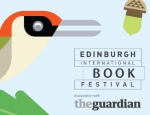A celebration of rural life, Matilda Tristram’s Binsted: The Heart of Our Horizon places the bucolic serenity of the small West Sussex village of Binsted in the greater context of a creeping threat to its tranquillity from an impending bypass development. Published by Binsted Arts, this 18-page offering is another sterling example of the graphic narrative’s capacity for succinctly encapsulating the pertinent points of an issue and communicating them to its readership on both informative and emotional levels.
Given that Binsted was Tristram’s childhood home, and her parents still live there, she obviously has a strong personal connection to the issues raised here, and a vested concern in the subject at hand. While this was always going to be a piece motivated by an understandable sense of protective interest, Tristram’s even-handed and considered approach to the facts ensures that depicting and conveying the palpable sense of looming loss permeating the village remains her immediate priority. This is no visual diatribe but rather a careful cataloguing of the new road’s damaging potential consequences for local life from a variety of layered perspectives.

It will probably come as little surprise that the environmental argument is understandably flagged up as an early concern. Taking us on a tour of Binsted’s environs, Tristram emphasises the idyllic nature of this locale with its ancient woodland and 12th century church. But, simultaneously, there’s also a very individual commentary apparent; one that is bound up in the psychogeographical. Childhood anecdotes about the local landmarks that could soon disappear, for example, underline how emotionally linked she and others are to the beauty spots and natural attractions of the area, and how devastating their disappearance could be for generations of villagers.

Whether it’s a large city or a small village, of course, communities are defined by the memories and interactions of those who have made up their populations over the decades. Tristram is quick to remind us of the crucial importance of that lineage. This is perhaps best represented in her account of one-time resident Lorna Wishart (below) who was involved with poet Laurie Lee and artist Lucian Freud, and was renowned for eccentrically riding around Binsted’s streets at night with her pet goat in tow. It draws the reader into the wider Binsted story, providing a larger context beyond the topical.
It’s through this gradual build-up of direct experience and storied local history that Binsted: The Heart of Our Horizon so effectively secures its audience’s deep investment in this small countryside neighbourhood. The vitality of its idiosyncrasies, its sense of supportive community, and the characters who have contributed to its past and shaped its future, meaning that the village itself becomes almost the protagonist in Tristram’s endearingly sprawling narrative.

Whether Binsted is defined as sequential art or graphic narrative (as I referred to it at the top of this piece) is open to personal interpretation. Every uniform page consists of four single images with descriptive text underneath rather than necessarily flowing panel-to-panel movement. What is not up for debate, though, is how engaging her cartooning is. That is especially noticeable in the expressive, stripped back visual characterisation of her figures as they traverse the backdrop of Binsted’s streets, fields and woods, and the way each illustration acts as a small but integral reminder of the greater tapestry of daily life here over the years. It’s an essential element in bringing us so intimately into village life and guaranteeing our empathy with its inhabitants.
As the book draws to its end there’s an analysis of the various alternatives to the new bypass and the unease and the uncertainty that the multiple proposed routes are bringing to the local residents. Binsted is measured in delivery but quietly passionate at its heart, conveying its message about the irrevocable environmental and social impact all the more acutely for its considered reflection and eschewing of confrontational anger.

Binsted: The Heart of Our Horizon interweaves elements of the historical, the personal and the natural world to remind us that “progress” often comes with an unacceptable price. A beautifully understated yet powerful piece of graphic reportage, this is a poignant example of social activism in comics form. Its true triumph, though, is the sense of place and belonging it will evoke in a readership who may never even visit the village in question…
For more on the work of Matilda Tristram visit her site here and follow her on Twitter here. You can buy Binsted: The Heart of Our Horizon here priced £4.00 or read an online version of it here.
For regular updates on all things small press follow Andy Oliver on Twitter here.














